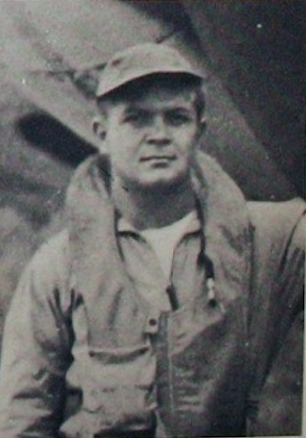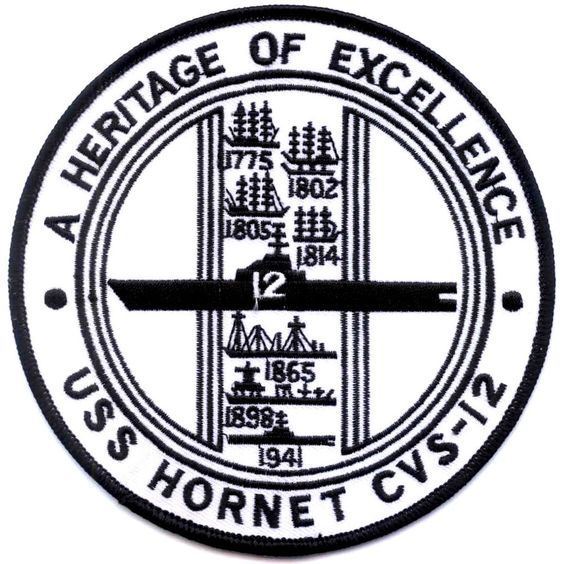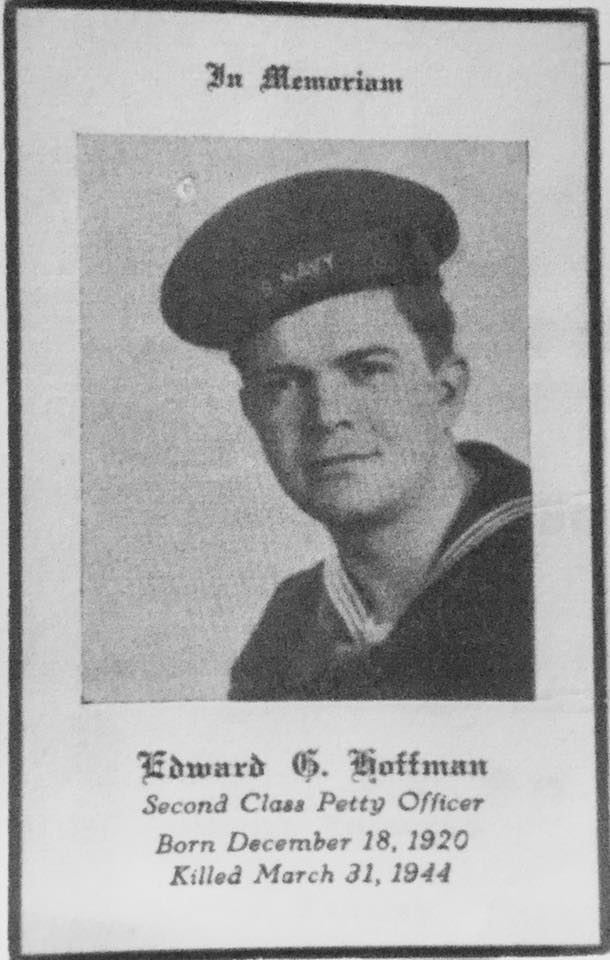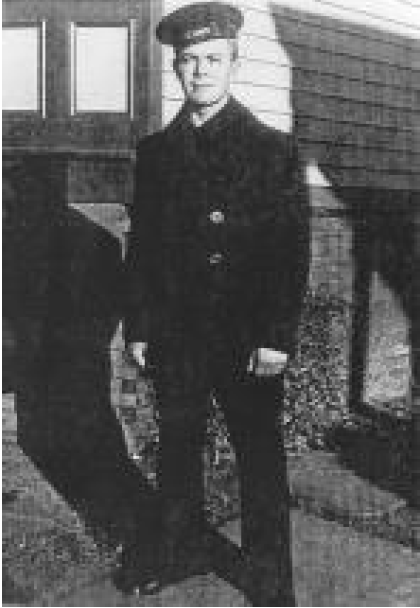|
MILITARY SERVICE OVERVIEW
|
|
He had enlisted in the United States Navy. Served during World War II. Hoffman had the rank of Petty Officer Second Class. His military occupation or specialty was Aviation Radioman Second Class. Service number assignment was 7076821. |
|
|
|
During his service in World War II, Navy Petty Officer Second Class Hoffman served as a crew member of the USS Hornet, Torpedo Squadron 2 |
|
|
|
During his service in World War II, Navy Petty Officer Second Class Hoffman was reported missing and ultimately declared dead on March 31, 1944. Recorded circumstances attributed to: Missing in action or lost at sea. |
COMMENDATIONS
|
|
World War II Victory Medal |
|
|
|
Purple Heart |
|
|
|
Combat Action Ribbon |
|
|
|
American Campaign Medal |
|
|
|
Navy Presidential Unit Citation |
|
|
|
Navy Good Conduct Medal |
|
|
|
Asiatic-Pacific Campaign Medal |
|
|
|
Navy Expeditionary Medal |
Please note this may not be a complete list of commendations and is based on research of available service records.
LIFE STORY
When Edward Thomas Hoffman was born on December 18, 1920, in New Jersey, his father, Edward, was 24 and his mother, Alice, was 23.
Edward was a champion baton twirler at Westside High School in Newark and later with the National Fife and Drum Corps of Newark. One of the biggest tournaments during the time was held yearly in Garfield, NJ. As many as 2,000 people would attend and teams from 14 states would be represented. Edward won 1st place in 1938 (The Herald News, Passaic, NJ, May 17, 1938). The Hoffman family were summer residents at Lake Parsippany for many years and eventually becoming permanent residents on Flemington Drive. He married Bernadette Jotz in 1943 and had no children.
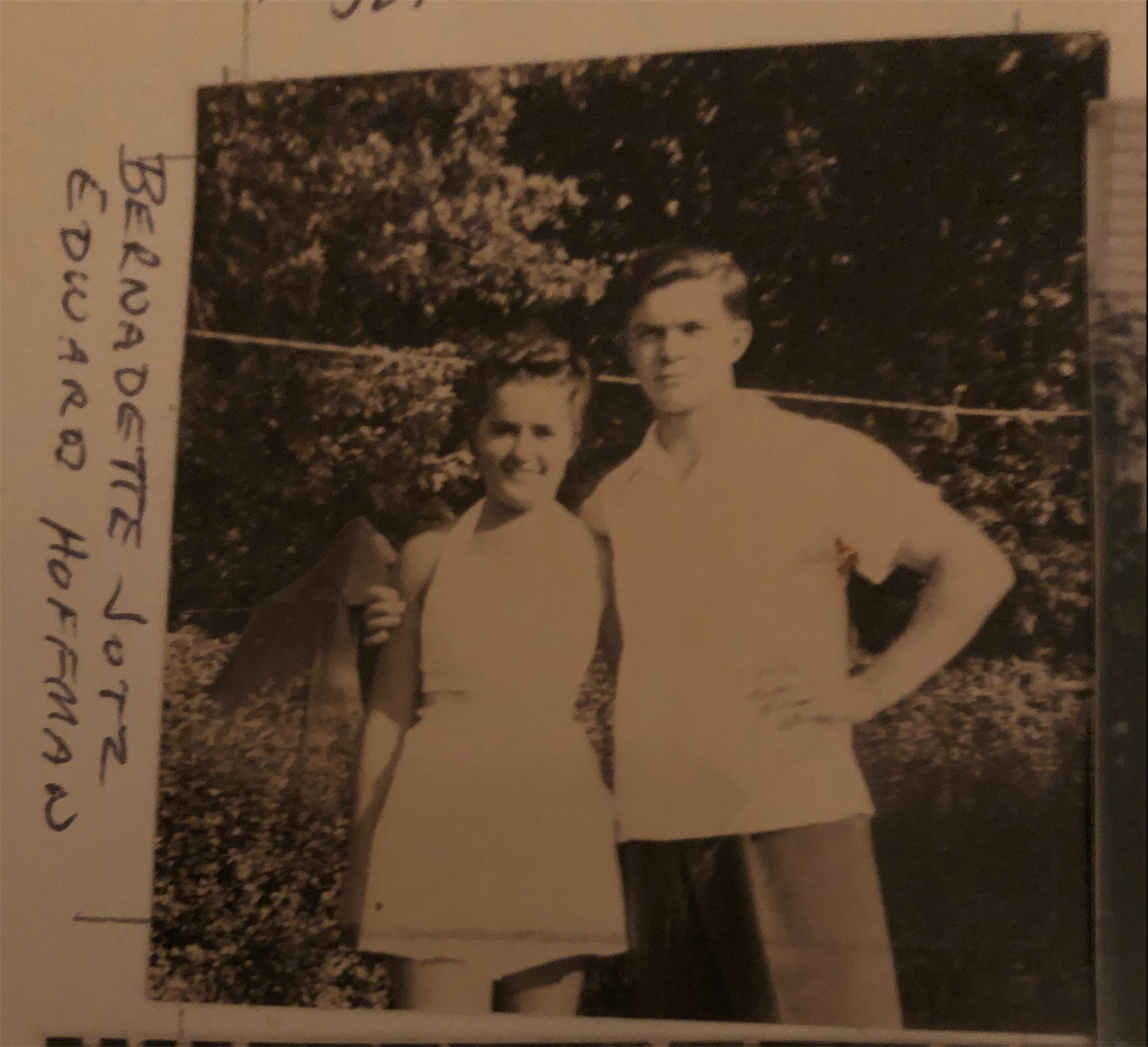
Bernadette Jotz and Edward Hoffman
Edward enrolled in the US Navy on October 14, 1942. As an aviation radioman with the Navy, he was in the crew of an Avenger Bomber to Torpedo Squadron 2 flying off the aircraft Carrier USS Hornet in the Pacific during World War II.
.jpg) Draft Card (front) |
.jpg) Draft Card (back) |
Hornet worked up off Bermuda before departing Norfolk, Virginia, on 14 February 1944 to join Task Force 58 at Majuro Atoll in the Marshall Islands where she arrived on 20 March. Two days later the Task Force departed to attack warships and airfields in the Palau Islands and the Kossol Roads to eliminate any threat to the scheduled operations in New Guinea and the Admiralty Islands. To block the exits from Kossol and trap all of the ships inside the lagoon, the torpedo bomber squadrons from Hornet and her sisters Lexington and Bunker Hill had trained on aerial minelaying. To avoid detection, the American ships steamed far south of the Japanese naval base at Truk. They were spotted on the 28th and Admiral Mineichi Koga, commander of the Combined Fleet, ordered his warships to withdraw to Tawi-Tawi Island in the Philippines and for the merchant shipping to disperse.
As Task Force 58 approached its targets on the morning of 30 March, its carriers launched a fighter sweep that shot down 30 Mitsubishi A6M Zero fighters already airborne and they were soon followed by 39 Grumman TBF Avenger torpedo bombers, each of which carried a pair of magnetic mines that effectively bottled up the 40-odd the first and only time that carrier aircraft laid mines during the Pacific War. Despite reinforcing fighters that flew in overnight, the Americans sank 24 merchant and auxiliary ships, totaling nearly 130,000 gross register tons (GRT) of shipping, plus two old destroyers, four subchasers and a pair of repair ships on 30 and 31 March. American pilots claimed to have shot down 63 aircraft and destroyed over 100 more on the ground while losing 25 aircraft of their own.
Radioman Hoffman was 24 years old when his plane was downed on March 31, 1944, During strikes on Palau Islands in Manila, Philippines. He and another crew member were in the craft when it crashed into the ocean. He is officially listed as missing in action.
_in_1944.jpg)
Avengers belonging to Torpedo Squadron 2 (VT-2) overflying Hornet, 1944.
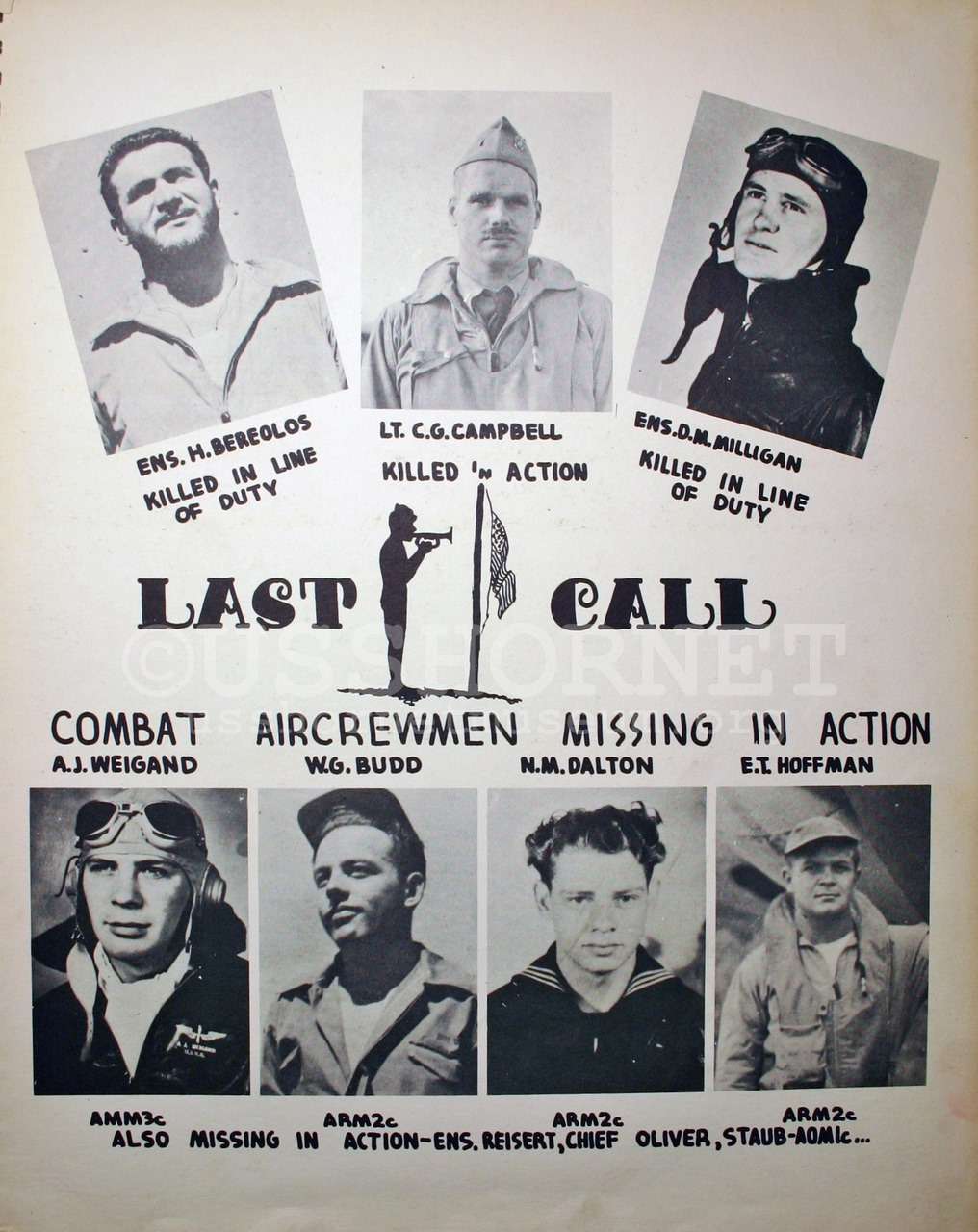
Last Call flyer from USS Hornet
REMEMBERED
Manila American Cemetery, Manilla, Philippines.
|
|
Edward T. Hoffman is memorialized at Tablets of the Missing at Manila American Cemetery, Manila, Philippines. This is an American Battle Monuments Commission location. |

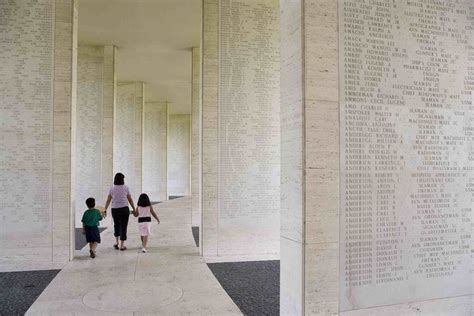
The Manila American Cemetery and Memorial in the Philippines occupies 152 acres on a prominent plateau, visible at a distance from the east, south and west. It contains the largest number of graves of our military dead of World War II, a total of 16,859, most of whom lost their lives in operations in New Guinea and the Philippines. The headstones are aligned in 11 plots forming a generally circular pattern, set among masses of a wide variety of tropical trees and shrubbery.
The chapel, a white masonry building enriched with sculpture and mosaic, stands near the center of the cemetery. In front of it on a wide terrace are two large hemicycles. Twenty-five mosaic maps recall the achievements of the American armed forces in the Pacific, China, India and Burma. On rectangular Trani limestone piers within the hemicycles, are inscribed the Tablets of the Missing containing 36,286 names. Rosettes mark the names of those since recovered and identified. Carved in the floors are the seals of the American states and its territories.

Tablet inscription: HOFFMAN EDWARD T – AVN RADIOMAN 2C – USNR – NEW JERSEY
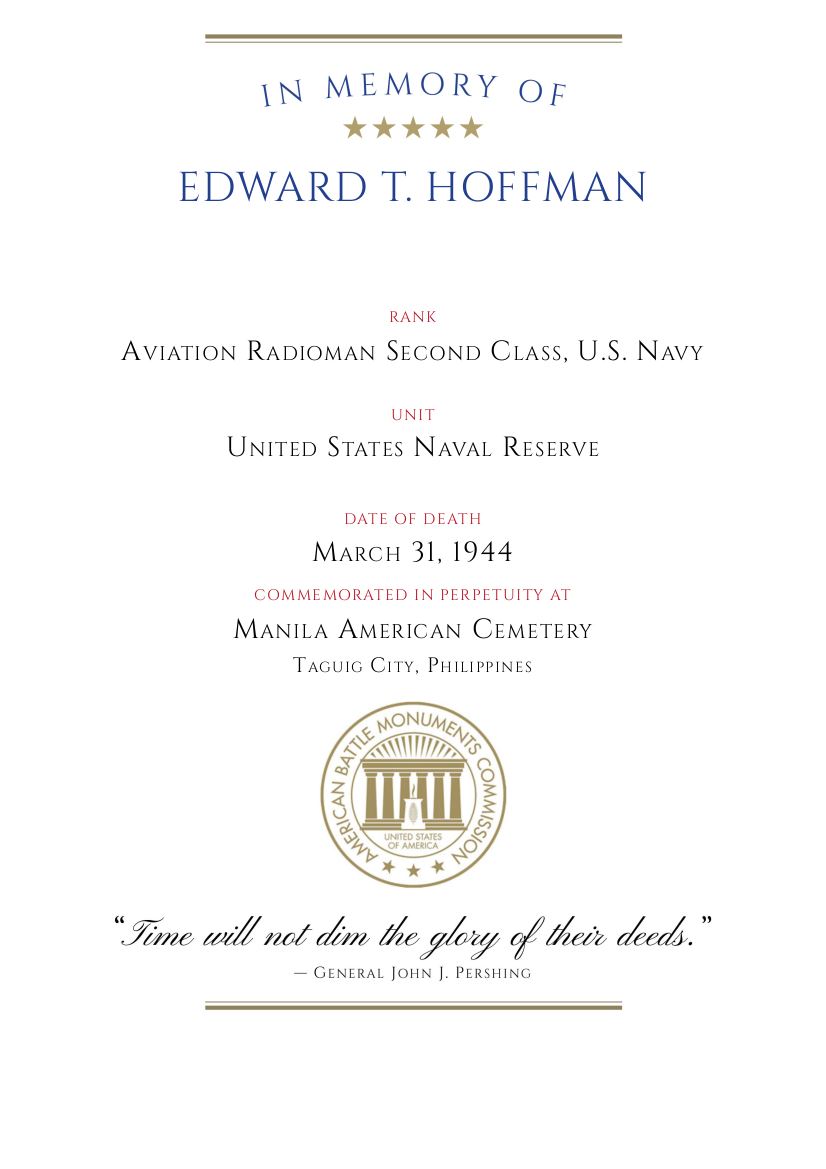
American Battle Monuments Commission War Dead Certificate.
click image for a printable copy.
Beverly National Cemetery – Beverly, New Jersey
Beverly National Cemetery is a United States National Cemetery located in the city of Beverly, in Burlington County, New Jersey, United States. Administered by the United States Department of Veterans Affairs, it is one of the 147 US National Cemeteries located throughout the country. The cemetery encompasses 64.6 acres, and as 2021 had over 50,000 interments of military veterans.
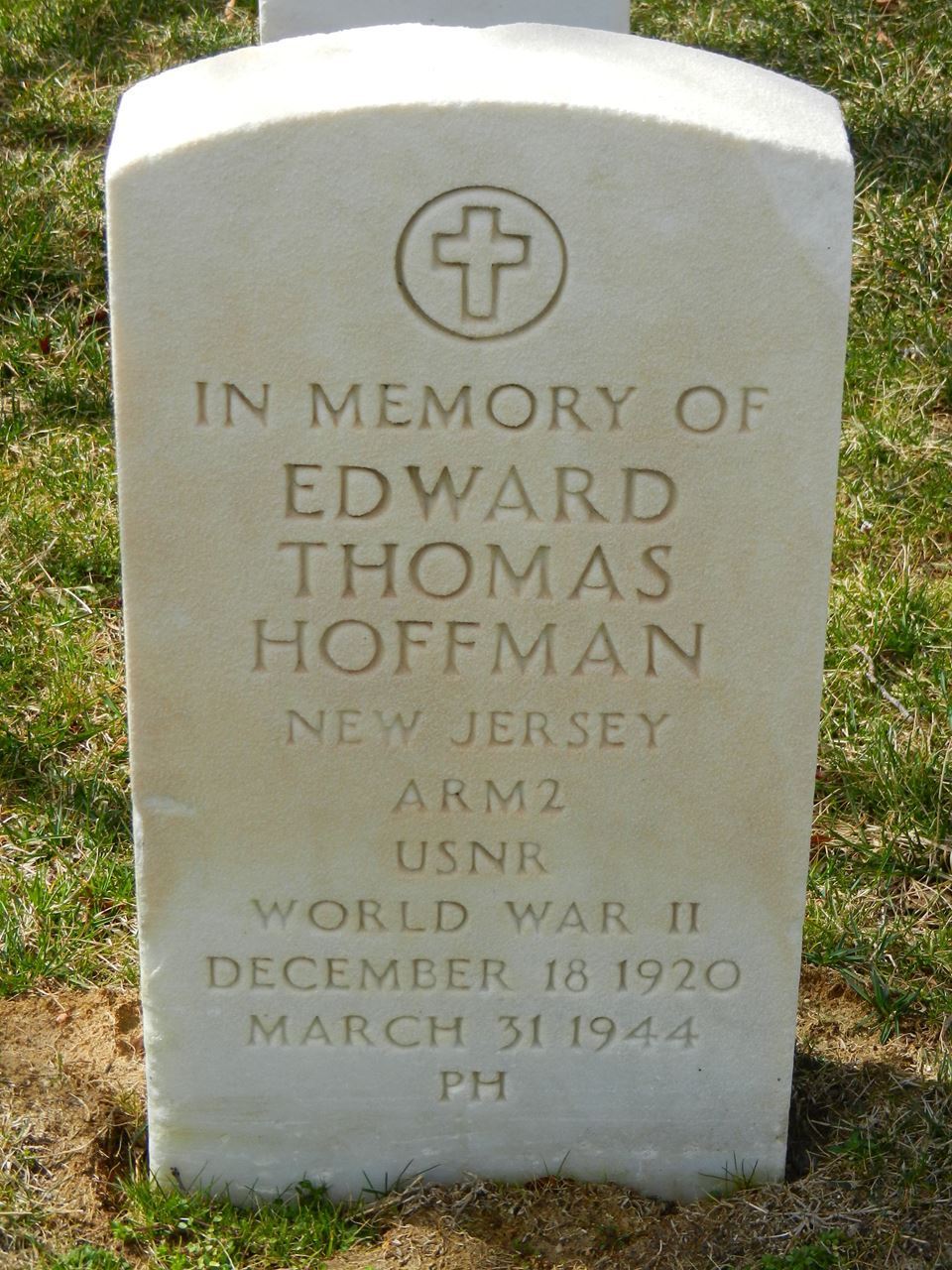

Edward T Hoffman memorialized at Beverly National Cemetery, Beverly, Burlington County, New Jersey, USA
15 years after his death, his mother Alice Hoffman filled an application for a headstone to be placed at Beverly National Cemetery with the Department of the Army.
.jpg)
.jpg)
Headstone Application (front) Headstone Application (back)
Hoffman Beach - Lake Parsippany, NJ
The beach named in honor of Edward T. Hoffman was known as Beach #4 in the 1930’s to 1940’s. The beach was dedicated shortly after WWII and is the most popular beach at Lake Parsippany. It offers a broad sandy beach for sunning and relaxation, with a large protected swim area.
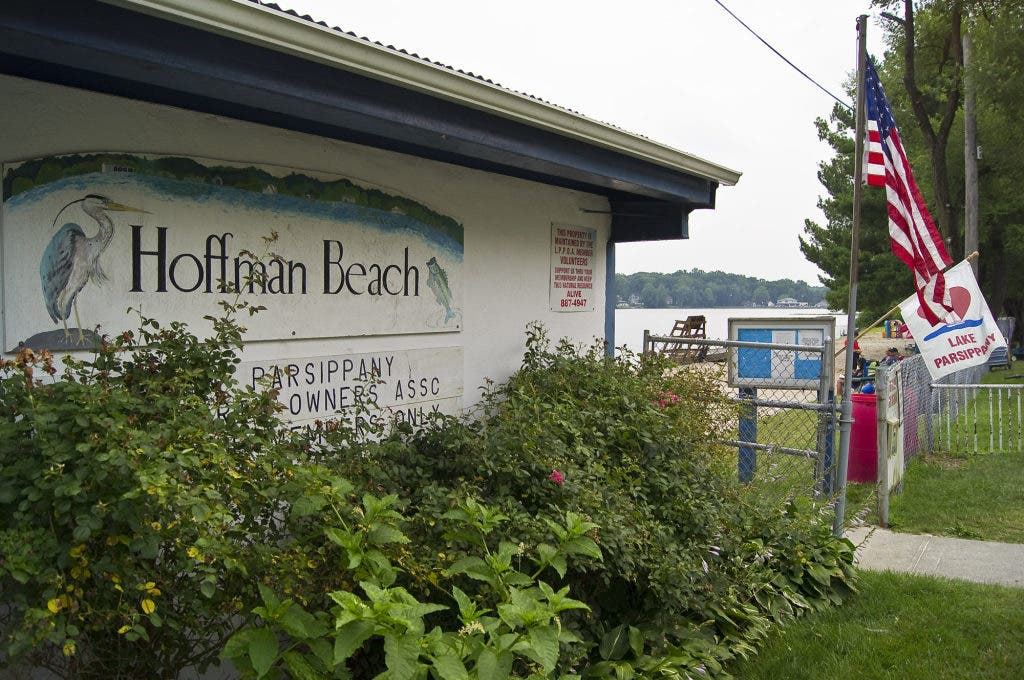
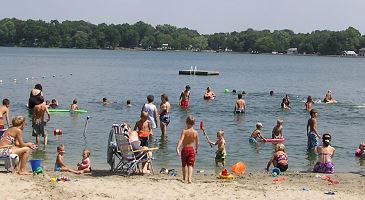
Hoffman Beach entrance and swim area

